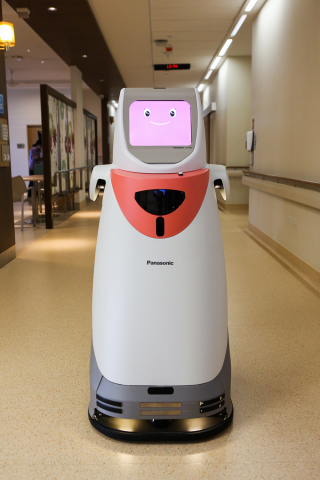
Changi General Hospital (CGH) in Singapore is piloting the use of Panasonic autonomous hospital delivery robots called HOPSI to improve operational efficiency of a hospital. The pilot launched in February 2015 has been implemented over several phases and is the first hospital outside of Japan to utilize the HOSPI robot. As part of the hospital’s porter management system, the four HOSPI are able to deliver fragile and bulky medicine, medical specimens and patients’ case notes 24/7, easing manpower constraints.
How It Works
The Panasonic HOSPI robot is equipped with security features to prevent tampering, theft and damage during delivery. The robot’s contents can only be accessed with ID cards. This automation enables HOSPI to move around using the lifts and between facilities in CGH’s Main Building and The Integrated Building on its own, delivering medicine and specimens.
Panasonic said HOPSI is programmed with the hospital’s map data to avoid obstacles such as patients in wheelchairs and complete deliveries with minimal supervision. New hospital routes can be programmed in advance, allowing flexibility. The autonomous robot communicates and relays information on its whereabouts to the control centre, enabling its location to be monitored and recorded at all times.
Panasonic aims to deploy HOSPI to other local hospitals in the future. Additionally, it is also test-bedding the use of Reysone, an electric care bed that separates and converts into a wheelchair safely and conveniently, at CGH. This 2-in-1 care bed not only facilitates the transfer and movement of patients, but also eliminates the need for additional storage areas. The Reysone test-bed will run for six months.
